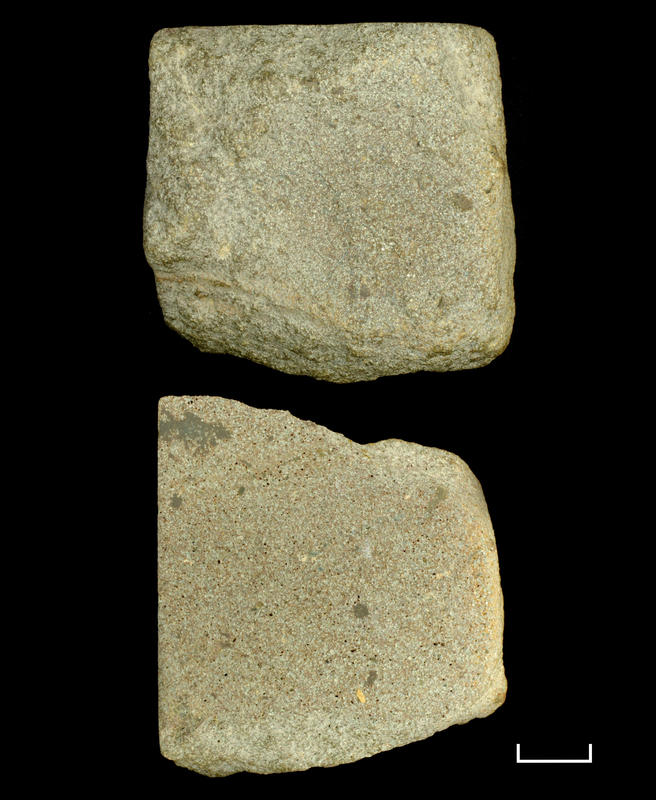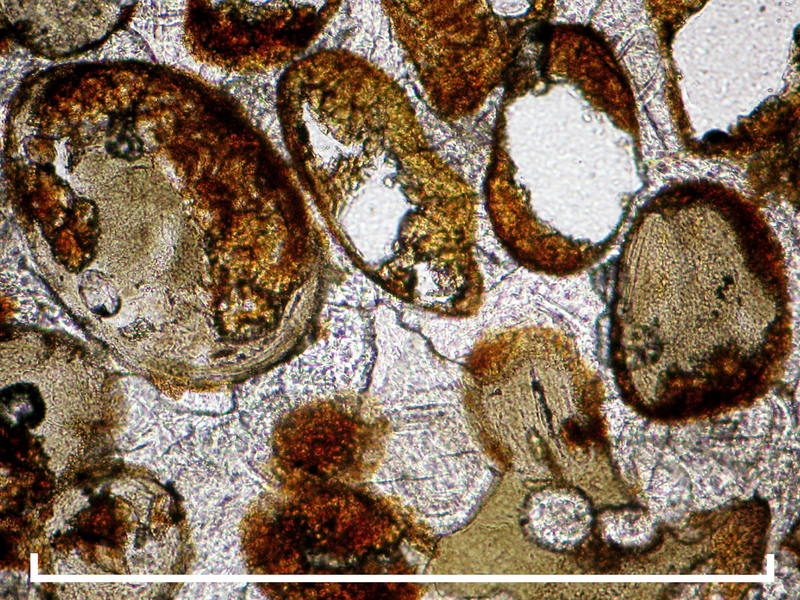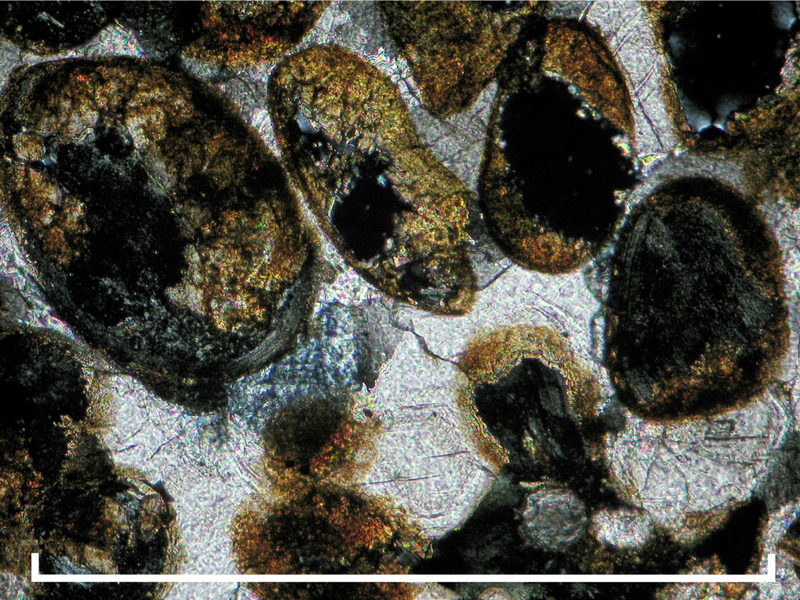- Home
- Rocks
- Type fossils
- Fossil Specimens
- Minerals
- Glossary
- Stratigraphic Chart
- Michel-Levy Chart
- Classification of igneous rocks
- University of Cambridge
- Department of Earth Sciences
- ESC Library
- Moodle
- Sedgwick Museum
- DoITPoMS
- Mindat.org
- Microfossils
- Bryozoans
- Webmineral
- Tree of Life
- CrystalMaker
- Virtual Microscope
L361 Oolitic ironstone
Title
L361
Oolitic ironstone
Subject
Age
Jurassic
Location
Inferior oolite
Thrapston, Northamptonshire
Description
Hand Specimen
This rock is made up of light grey sub-spherical ooids.
Fine to medium sand grain size.
A few lithic/biogenic fragments.
Dark grey cement.
Small hair-line white veins run through this rock.
Thin-section
Ooids made up of a greenish sheet silicate mineral called chamosite, partially altered to siderite and limonite. Concentric structure. Central cores of fine-grained material.
A layer formed of brown, transparent crystals, sometimes with rhombic cross-sections surrounds the peripheries of many ooids. This is siderite.
Some quartz grains.
The cement is made up mainly of carbonate (siderite), with a small quantity of a green-brown material, which has anomalous interference colours.
This rock is a grainstone (Dunham naming system) or oo-sparite (Folk naming system).
Rock History
Deposited in a moderate energy, marine energy.
Advanced Notes
Chamosite is an Fe-rich chlorite, often greenish. It is a sheet silicate.
Limonite is amorphous or cryptocrystalline, and yellow-brown to brownish-black in colour. It comprises hydrated iron (III) oxides with a range of compositions.
Siderite is iron carbonate (FeCO3). It is often difficult to distinguish siderite from calcite and dolomite optically.
Rock Name
oolitic ironstone
oolite
oolite
Citation
“L361
Oolitic ironstone,” 1A Collections, accessed April 9, 2024, https://wserv3.esc.cam.ac.uk/p1acollections/items/show/34.
Oolitic ironstone,” 1A Collections, accessed April 9, 2024, https://wserv3.esc.cam.ac.uk/p1acollections/items/show/34.



